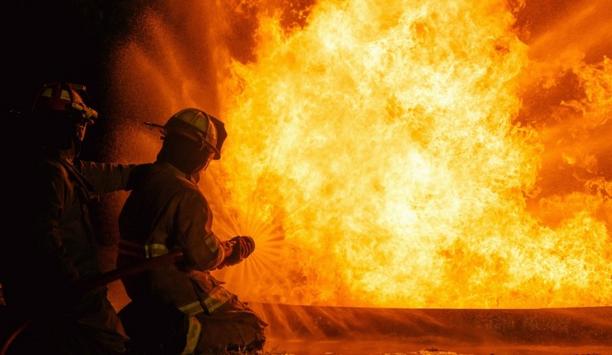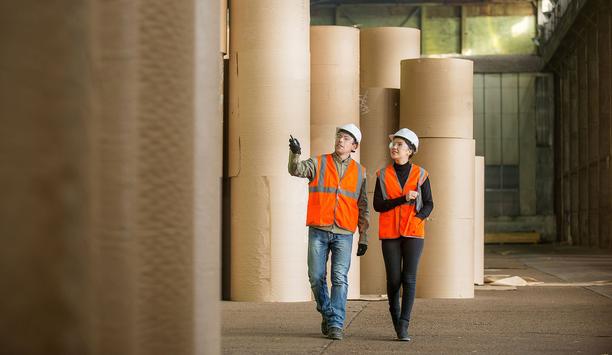Resolve Risk Ltd - Experts & Thought Leaders
Latest Resolve Risk Ltd news & announcements
The newly created not-for-profit organization, the Building Safety Alliance will deliver a publicly accessible register of certified Building Safety Managers in a move that will increase confidence in the competence of these new duty holders prescribed in the Building Safety Bill. Emerging from the working group activity of the Competence Steering Group, the Building Safety Alliance marks a significant step forward for establishing the role of a Building Safety Manager in higher risk buildings. This is one of three new duty holder roles set out in the Building Safety Bill and will be required once a higher risk building is handed over for occupation. Creation of the Building Safety Manager role The creation of the Building Safety Manager role is one of the recommendations from Dame Judith Hackitt’s building fire safety report. Initially, the Building Safety Alliance will deliver two functions: The certification of individual Building Safety Managers A publicly accessible register of those certified by the scheme Building Safety Alliance Anthony Taylor, Proprietor of Resolve Risk Ltd, chaired the Competence Steering Group’s Working Group 8 In due course, the Building Safety Alliance will work with others to evaluate how organizations who wish to deliver the function of the Building Safety Manager can be assessed as having the organizational capability to do so. Anthony Taylor, Proprietor of Resolve Risk Ltd, chaired the Competence Steering Group’s Working Group 8 that was responsible for developing the competence requirements for the Building Safety Manager role. ‘Safer people, safer homes: Building Safety Management’ report The group published a report of its work, ‘Safer people, safer homes: Building Safety Management’ in June 2020. Mr. Taylor is also leading the British Standards activity to create PAS 8673 Framework for competence of Building Safety Managers. He is the interim Chair of the Building Safety Alliance. Commenting on the launch of the Building Safety Alliance, Anthony Taylor said: “When we were initially asked to develop the competence requirements for the new statutory role of Building Safety Manager, we recognized that for the framework to work, we also needed to set up wider structures that would support the development of and drive for a recognized and uniform standard of competence." One key recommendation was the need for a register The Fire Protection Association (FPA) is one of many organizations supporting the Building Safety Alliance Anthony Taylor adds, “One of our key recommendations was the need for a register that would allow residents and accountable persons to check if the Building Safety Manager for their building meets the minimum competence requirements. Government is looking at industry to deliver this, so we stepped forward with our wide consortium from across both the private and public sectors.” The Fire Protection Association (FPA) is one of many organizations supporting the Building Safety Alliance. Other organizations include the National Fire Chiefs Council, the National Housing Federation and the Institute of Workplace and Facilities Management. FPA welcomes the launch of the Building Safety Alliance The FPA’s Head of Training, Claire Wright, welcomed the launch of the Building Safety Alliance. She said: “This is a great first step to providing a tangible benchmarking for this important role. End users and building owners require a clear path forward to be confident they are not only meeting statutory requirements, but providing the right level of support to their staff and the right level of safety to their occupants. We look forward to seeing how this develops and how we can provide support to the Alliance's aims." The next episode of the FPA’s Assembly Point Podcast will feature a panel discussion, chaired by Claire Wright, about building competency as the Building Safety Manager. This will be available later in August.
A blueprint to improve competence for those working on higher-risk buildings and drive culture change has been set out by a cross-industry group representing more than 150 organizations in the fire and built environment industries. Setting the Bar is the second and final report of the Competence Steering Group (CSG) and is an update of its Interim Report, Raising the Bar, published in August 2019. The work was initiated by the recommendations in Dame Judith Hackitt’s review Building a Safer Future. The proposed overarching system of competence set out in the report is made up of four key elements: A new competence committee sitting within the Building Safety Regulator A national suite of competence standards – including new sector-specific frameworks developed by 12 working groups Arrangements for independent assessment and reassessment against the competence standards A mechanism to ensure that those assessing and certifying people against the standards have appropriate levels of oversight Setting the Bar report The CSG and its working groups have consulted widely and taken on board feedback Since the publication of Setting the Bar, the CSG and its working groups have consulted widely and taken on board feedback, as they have continued to develop sector frameworks and overarching competence frameworks. These frameworks will provide the skills, knowledge, experience and behaviors needed to carry out specific roles, and deliver a more rigorous approach to the essential training and assessment that is required. Additionally, the competence requirements for the new role of Building Safety Manager have also been completed – which has been a major element of the CSG’s work. Setting the Bar, includes a summary of the key points under the Working Group 8 section, but there is a full and separate report published by WG8 alongside this report, ‘Safer people, safer homes: Building Safety Management’, reflecting the fact that WG8 is establishing a completely new role and the competence needed. CSG's recommendations The CSG is recommending that all individuals whose work on higher-risk buildings is likely to materially affect safety outcomes, or who work unsupervised on these buildings, should meet the skills, knowledge, experience and behaviors set out in the competence frameworks developed by the industry. CSG Chairman, Graham Watts, the Chief Executive of the Construction Industry Council, said: “We would see higher-risk buildings as an essential starting point for the new competence frameworks for the whole of the built environment, which would result in a step change across the sector and change of industry culture.” Proposal for a Committee on Industry Competence The CSG has worked closely with the Ministry of Housing Communities and Local Government The CSG has worked closely with the Ministry of Housing Communities and Local Government and some of the Report’s key recommendations have already been adopted, including the proposal for a Committee on Industry Competence as set out in the draft Building Safety Bill. The CSG is urging government to make mandatory the assessments against the frameworks for those working on higher-risk buildings, and is calling on government to take the lead by requiring that the competence framework set out within this report (subject to their review against the Overarching Competence Framework Standard currently being developed through BSI) must be met by any company or individual working on any higher-risk building. Ensuring higher levels of competence Graham Watts said: “There is no time to lose in casting aside the substandard practices that have shamed the industry. In this document we have set a new bar and we would urge all those working in life-critical disciplines to attain these higher levels of competence. Only then can we rebuild the trust of those who occupy and live in the buildings we design, construct and manage.” Anthony Taylor, the Chairman of WG8, Director, H&S for Avison Young, said: “Developing the completely new role of Building Safety Manager has been an enormous undertaking, which we have worked closely with MHCLG to achieve. We believe the competences and job functions we have set out will deliver the reassurance and trust to residents that their buildings are being managed safely by landlords.”
The New Future For Fire Agencies
DownloadThe Eight Key Trends in Fire Detection in 2023
DownloadA Digital Platform to Improve Fire Safety Compliance and Inspections
DownloadOvercoming the Challenges of Fire Safety in the Paper Industry
DownloadCarbon Monoxide: Creeping Killer Caught In The Act
Download






